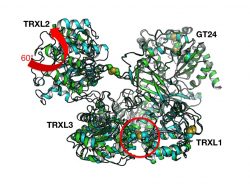Project overview: Inhibition of HAO1 to treat primary hyperoxaluria type 1
Hello everybody! I am Sabrina, a third year DPhil student in Wyatt Yue’s lab at the SGC University of Oxford, co-supervised by Paul Brennan. I am fascinated by how a single base change in an enzyme-coding gene can lead to a diverse group of symptoms and how the severity of such diseases can be reduced Read More …

